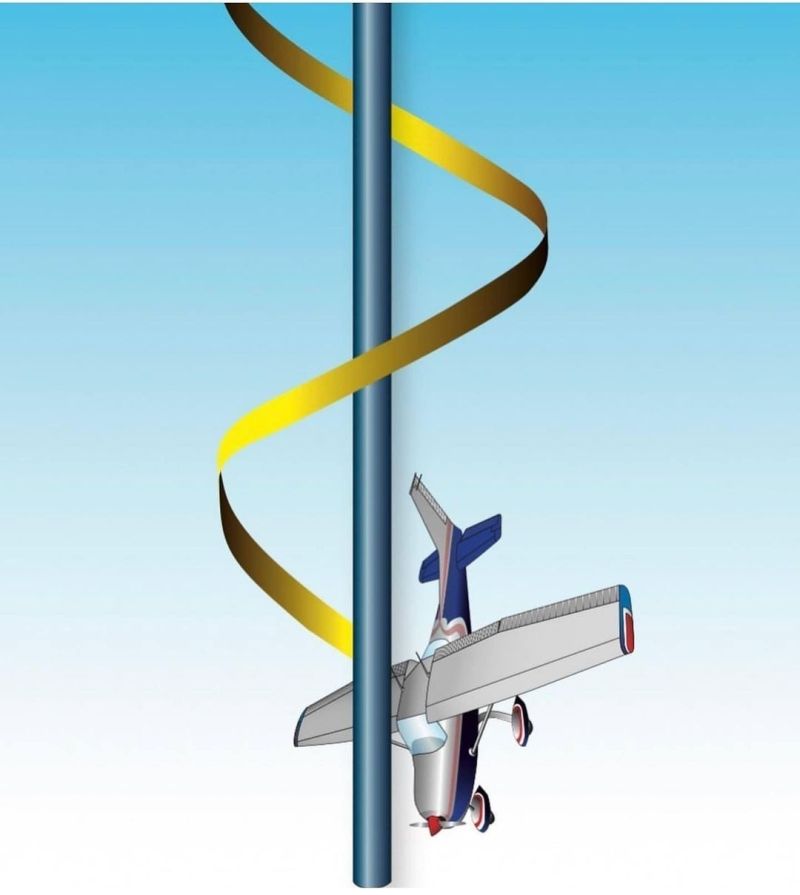
A spin is an aggravated stall that typically occurs from a full stall occurring with the airplane in a yawed state and results in the airplane following a downward corkscrew path.
As the airplane rotates around a vertical axis, the outboard wing is less stalled than the inboard wing, which creates a rolling, yawing, and pitching motion.
The airplane is basically descending due to gravity, rolling, yawing, and pitching in a spiral path.
The rotation results from an unequal angle of attack (AOA) on the airplane’s wings.
The less-stalled rising wing has a decreasing angle of attack (AOA) , where the relative lift increases and the drag decreases.
Meanwhile, the descending wing has an increasing angle of attack (AOA), which results in decreasing relative lift and increasing drag.
A spin occurs when the airplane’s wings exceed their critical angle of attack (AOA) (stall) with a sideslip or yaw acting on the airplane at, or beyond, the actual stall.
An Airplane will yaw not only because of incorrect rudder application but because of adverse yaw created by aileron deflection, engine/prop effects, including p-factor, torque, spiraling slipstream, and gyroscopic precession, and wind shear, including wake turbulence.
If the yaw had been created by the pilot because of incorrect rudder use, the pilot may not be aware that a critical angle of attack (AOA) has been exceeded until the airplane yaws out of control toward the lowering wing

A stall that occurs while the airplane is in a slipping or skidding turn can result in a spin entry and rotation in the direction of rudder application, regardless of which wingtip is raised.
If the pilot does not immediately initiate stall recovery, the airplane may enter a spin.
Maintaining directional control and not allowing the nose to yaw before stall recovery is initiated is key to averting a spin.
Modern airplanes tend to be more reluctant to spin compared to older designs, however it is not impossible for them to spin.
Mishandling the controls in turns, stalls, and flight at minimum controllable airspeeds can put even the most reluctant airplanes into an accidental spin.
Author – Mohamed Freihat
(C130/L100 , A&C approved consultant)
